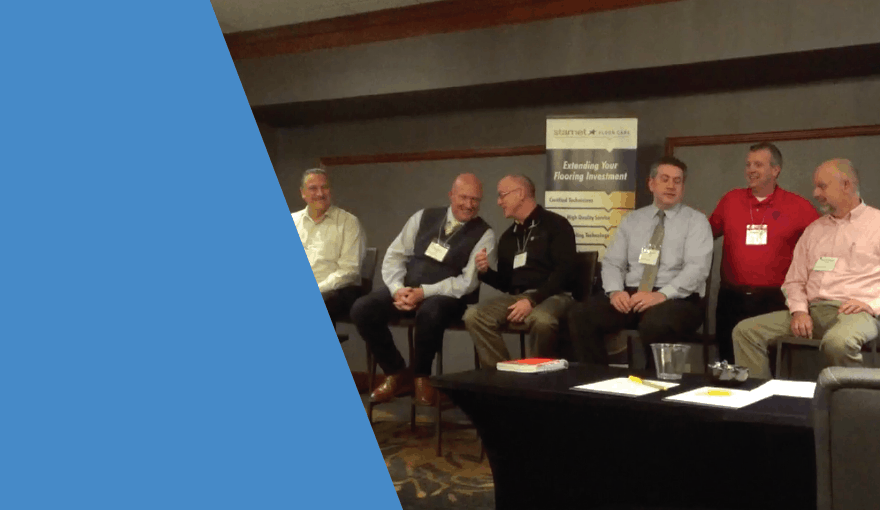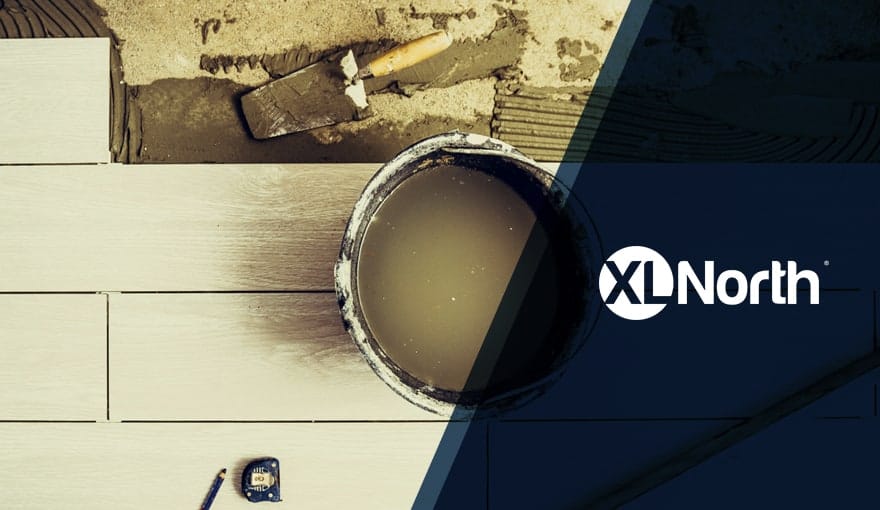We can all agree that profitability, regardless of industry, is the end goal for any organization. While turning a profit can be a challenge, increasing the bottom line is a more common obstacle for many flooring maintenance businesses. For most, the first step to boosting profits is improving efficiency.
Floor care is an industry heavily driven by labor, from the top down. Increasing efficiency throughout the entire organization is the first step in raising profits. But how do you do it? We reached out to three flooring maintenance experts to learn how establishing company standards, defining best practices, and building upon proven procedures can help cut down on waste and yield better earnings.

Chip Grimes, Facility Services Group
Mindset, to us, is the most important tool. If the crew (or anyone in our company) always knows that they are well informed about the company goals and objectives, have proper training, and understand everyone in the company is on the same page, then completing their task will become much easier.
We like to collect a lot of information during every phase of a project – this includes sales, demos, work execution, safety, project result, etc. All this information is shared so everyone in the company can be efficient, equipped, and well informed. We discuss this on a regular basis with everyone and we call it the FSG 3rd dimension.
Here is a simple example: my son loves extreme sports. He watches a lot of YouTube to figure it out, but when he goes out and tries he is not successful. It’s not due to a lack of effort or desire, it’s that he only has a 2 dimensional understanding. The FSG 3rd dimension comes from practice, experience, feedback, and most importantly, the right mindset.
Every day we work on the FSG 3rd dimension, which is pushing us towards our company’s strategic objectives.

Bob Deweese, Rite Rug
Improving efficiency comes down to decreasing labor hours, from scheduling the job to project completion. Inefficiency often starts with improper planning. Putting eyeballs on a job before it begins (pre-planning) provides much needed information that can improve efficiency, including:
- time needed to move equipment and supplies
- tools, equipment and materials required for job completion
- traffic patterns to be aware of and/or work around
- knowledge of furniture placement and space layout
- gaining proper access to the building, space, and janitorial closets (maps, keys, key cards, security contact info)
We’ve found that spending more time on the front end to define the project’s scope and requirements saves a lot more time during the actual procedural application. And, a simple reminder the day of the project goes a long way in assuring that a crew of technicians isn’t left without work because the customer forget that the job was scheduled.
Trying to expedite the cleaning process in the field also leads to inefficiency. Pushing a wand faster or moving a counter-rotating brush machine more rapidly may decrease time spent on a job, but it doesn’t properly clean the carpet. It actually decreases efficiency because you’ll likely need to make a second trip to get the floor clean.
Having the appropriate equipment and tools for a job (and logging them into a book of assets) is also key to improving efficiency. There isn’t one universal cleaning method for every floor, which is why our industry offers a variety of options – low moisture, box extraction, dry compounds – and each has its own place and time in an environment. Without the needed tools or equipment, you techs won’t be as effective in accomplishing the task at hand, labor hours will increase and efficiency goes out the window.
Chemistry also plays an important role in labor hours and productivity. Cutting chemical cost is simply irrelevant to the scope of a project. While there are cheaper chemical choices, with what seem like significant savings from gallon to gallon, the cost per square foot is negligible in the grand scheme of things. Providing techs with the best chemistry available actually improves efficiency because they spend less time working with a subpar product. That cheaper chemical may save you pennies, but you’re actually throwing away dollars in time spent using it.

Steve Brown, Infinite Floorcare
Efficiency in floor care starts at the top and filters down, much like a sports organization. The owner supplies support, company assets, materials and equipment. An operations manager is similar to a coach and is an important component to building a solid team. Managers are responsible for almost all planning, training, and developing basic fundamentals. The equipment is also an essential part of the team and it’s crucial to provide the best tools, vehicles, materials and chemistry possible. Engineers and chemists have designed equipment and chemicals that meet or exceed industry standards, especially when it contributes to efficiency. Take advantage of that and don’t let cost be the deciding factor.
The last member of the floor care team, and certainly the most vital to a cleaning organization, is the technician. Similar to a player on a sports team, having a well-trained and capable tech is key to producing industry standard efficiency. Techs with the ability to think on the job and improvise are crucial to maximizing productivity.
Technicians are truly the key to increasing business efficiency. Why? They spend more time on a job than any other team member, from executing work orders to driving to the job, from maneuvering equipment from the vehicle to maintaining machines while on the job to get the best performance. On top of that, their time in the field can be met with uncontrollable variables, and how they react and adjust can make or break efficiency. These variables include:
- traffic based on day or time
- occupied foot traffic in a space
- competing with janitorial for water access
- cleaning results don’t match demo results
- equipment malfunctions
There are numerous unforeseen or inconsistent obstacles that techs will face that can impede performance. How quickly they process and overcome them is imperative to maintaining an efficient crew.
A PDF version of this article is available for download. Get it here today! No form submission required.


